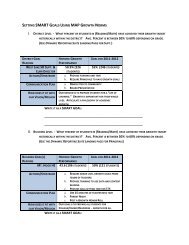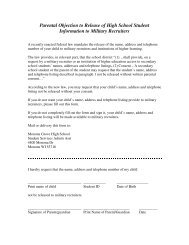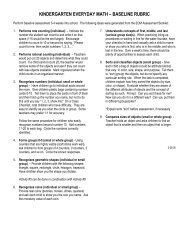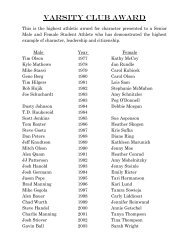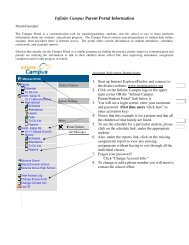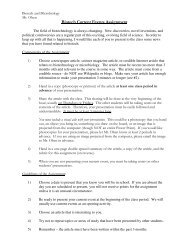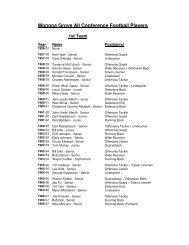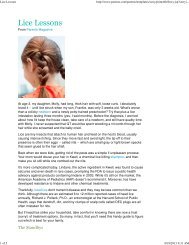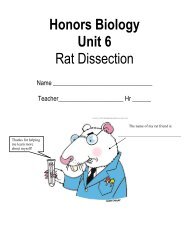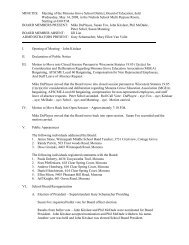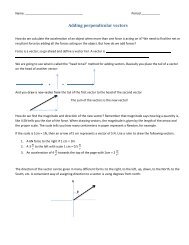Packet for Cu lab, naming and writing formulas, reaction types and ...
Packet for Cu lab, naming and writing formulas, reaction types and ...
Packet for Cu lab, naming and writing formulas, reaction types and ...
You also want an ePaper? Increase the reach of your titles
YUMPU automatically turns print PDFs into web optimized ePapers that Google loves.
Next <strong>reaction</strong><br />
3) Put a pre-cut piece of aluminum wire in the test tube so it hooks over the top <strong>and</strong> is submerged in the liquid. Record<br />
your observations.<br />
Observations be<strong>for</strong>e <strong>reaction</strong><br />
Observations during <strong>and</strong> after the <strong>reaction</strong><br />
• <strong>Cu</strong>Cl 2:<br />
• During <strong>reaction</strong>:<br />
• Al:<br />
• After <strong>reaction</strong>:<br />
E. What evidence of chemical change did you observe? ________________________________________________<br />
____________________________________________________________________________________________<br />
F. Was the <strong>reaction</strong> an exothermic or endothermic <strong>reaction</strong>? Describe your answer: ___________________________<br />
____________________________________________________________________________________________<br />
G. The <strong>reaction</strong> you completed is described below. Write it in symbols:<br />
The combination of copper (II) chloride with the aluminum wire produced a diluted solution of aluminum<br />
chloride <strong>and</strong> a precipitate of copper.<br />
H. Now circle the reactants, <strong>and</strong> put a square around the products. Remember to <strong>lab</strong>el each reactant <strong>and</strong> product as<br />
(s), (l), (g), or (aq).<br />
4) When the <strong>reaction</strong> is done (bubbling stops), shake off the copper from the aluminum wire, decant <strong>and</strong> discard the<br />
liquid, <strong>and</strong> rinse the copper with distilled water.<br />
5) For each bench-top, fill a 250 ml beaker with over 200 ml of deionized water <strong>and</strong> place the beaker on a hot plate.<br />
Turn the hot plate to medium (around 200 F).<br />
6) Set-up a ring-st<strong>and</strong> <strong>and</strong> place a funnel in the ring. Position your 400ml beaker below the funnel.<br />
7) Get one 12.5 cm circle of filter paper. Mass the filter paper at one of the weighing stations <strong>and</strong> write this mass here:<br />
Mass of my filter: ______________



